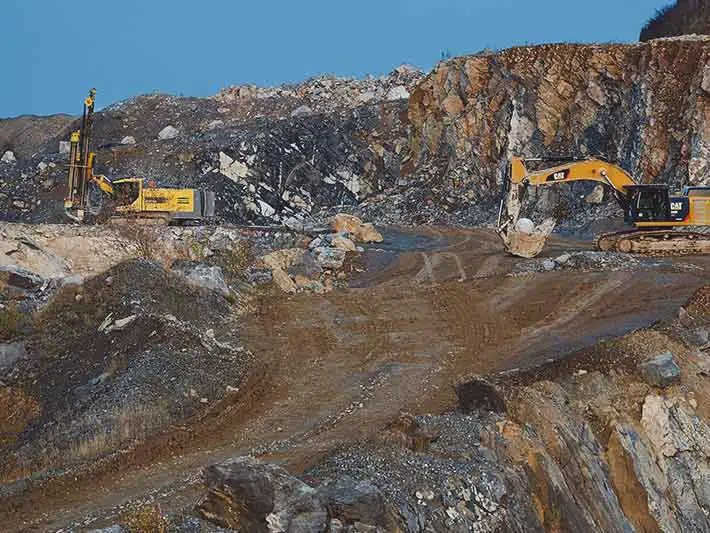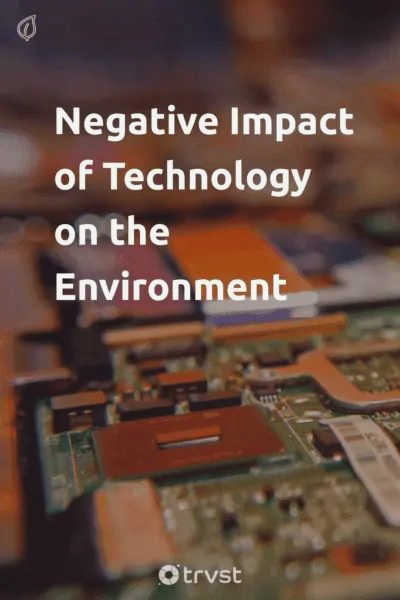In recent years, technology has played a significant role in the field of environmental activism and civil society. With the increasing accessibility and affordability of digital tools, individuals and organizations have been able to raise awareness, mobilize supporters, and advocate for change like never before. The rise of social media platforms, data-driven analytics, and online collaboration tools have revolutionized the way environmental issues are addressed and tackled.
One of the most notable impacts of technology on environmental activism is the ability to connect with a global audience. Social media platforms such as Facebook, Twitter, and Instagram have provided a platform for environmental activists to share their message, experiences, and call to action with a wide audience. This has allowed information to spread quickly and reach individuals who may not have been previously engaged in environmental issues.
Furthermore, technology has enabled activists to organize and mobilize supporters more effectively. Online platforms and apps designed specifically for activism have made it easier for individuals to find like-minded individuals, join campaigns, and take action. These tools have also allowed for better coordination and collaboration between different organizations and activists, leading to more powerful and impactful collective action.
Advancements in Digital Communication
The rapid advancements in digital communication technology have had a profound impact on environmental activism and civil society. The ability to instantly connect and share information globally has revolutionized the way activists mobilize, educate, and advocate for environmental causes.
Increased Reach and Awareness
Digital communication platforms such as social media, websites, and online forums have significantly increased the reach and awareness of environmental issues. Activists can now easily disseminate information and engage with a global audience, allowing them to amplify their message and raise awareness on a much larger scale.
Real-Time Updates and Reporting
Digital communication tools enable activists to provide real-time updates and reporting on environmental issues. Through live streaming, social media posts, and online articles, activists can document and share information about environmental crises or events as they unfold, allowing the public to stay informed and take action more effectively.
Collaboration and Networking
Digital communication technology has also facilitated collaboration and networking among environmental activists and organizations. Online platforms provide spaces for like-minded individuals and groups to connect, share ideas, and coordinate their efforts. This has led to the formation of global networks and partnerships that work together to tackle complex environmental challenges.
Citizen Journalism and Advocacy
Digital communication channels have empowered individuals to become citizen journalists and advocates for environmental issues. Through blogs, podcasts, and social media platforms, individuals can share their personal stories, experiences, and opinions, giving a voice to marginalized communities and shedding light on often overlooked environmental concerns.
In conclusion, the advancements in digital communication have revolutionized environmental activism and civil society. They have increased the reach and awareness of environmental issues, provided real-time updates and reporting, facilitated collaboration and networking, and empowered individuals to become citizen journalists and advocates. These advancements have played a crucial role in mobilizing and empowering individuals and communities to take action and create positive change for the environment.
Emergence of Online Communities
The emergence of online communities has been a significant development in the realm of environmental activism and civil society. With the advent of the internet and social media platforms, individuals from all around the world can now connect and collaborate in ways that were previously unimaginable. These online communities have played a crucial role in mobilizing people, spreading awareness, and organizing collective actions for environmental causes.
One of the key advantages of online communities is the speed at which information can be shared and disseminated. Through platforms like Twitter, Facebook, and Instagram, environmental activists can instantly reach a global audience and engage with people who share their concerns. This has led to a greater exchange of ideas and knowledge, creating a more informed and empowered citizenry.
Online communities also provide a space for like-minded individuals to connect and form networks. Through forums, chat groups, and online platforms dedicated to specific environmental issues, people can come together to share resources, experiences, and strategies. This sense of community fosters a shared sense of purpose and motivation, enabling individuals to work together towards common goals and make a collective impact.
Furthermore, online communities have enabled activists to leverage crowdfunding and digital campaigns to support their causes. Through platforms like Kickstarter and GoFundMe, environmental activists can raise funds for initiatives such as reforestation projects, climate change research, and wildlife conservation efforts. This democratization of fundraising allows individuals to contribute financially to causes they believe in, regardless of their geographical location or financial means.
In addition to fundraising, online communities have also been instrumental in shaping public opinion and influencing decision-making processes. Through online petitions, virtual protests, and social media campaigns, activists can amplify their voice and put pressure on policymakers and corporations to take action on environmental issues. This collective action has resulted in significant victories, such as the banning of single-use plastics in certain countries and the divestment from fossil fuel industries by major financial institutions.
Overall, the emergence of online communities has revolutionized the way in which individuals can engage in environmental activism and civil society. These virtual spaces have provided a platform for collaboration, information sharing, fundraising, and advocacy, empowering individuals to have a greater impact on the world around them. As technology continues to advance, it will be interesting to see how online communities evolve and shape the future of environmental activism.
Virtual Advocacy Campaigns
Virtual advocacy campaigns have become a powerful tool for environmental activism and civil society. With the rapid advancement of technology, individuals and organizations are now able to engage in advocacy efforts from the comfort of their own homes, reaching a global audience and creating significant impact.
Online petitions and letter-writing campaigns are common virtual advocacy methods that allow individuals to voice their concerns and demand change from decision-makers. These campaigns can be easily shared on social media platforms, reaching a wider audience and generating support for the cause. Online petitions can gather thousands, or even millions, of signatures, showing the sheer magnitude of public support for a particular environmental issue.
Social media activism has also played a crucial role in virtual advocacy campaigns. With the widespread use of platforms like Facebook, Twitter, and Instagram, activists can raise awareness about environmental issues, share information, and mobilize supporters to take action. Through hashtags, posts, and viral content, social media campaigns can draw attention to urgent matters and encourage others to get involved.
Virtual rallies and protests have also become a popular method of advocacy in the digital age. Instead of physically gathering in one location, individuals can participate in virtual rallies and protests through live-streaming platforms or online events. This allows people from all over the world to unite and show their support for environmental causes without the limitations of physical distance.
Online fundraising campaigns have revolutionized the way organizations and individuals raise funds for environmental initiatives. Through crowdfunding platforms, activists can reach a larger pool of potential donors, who can contribute easily and securely from their own devices. This has democratized the fundraising process and made it more accessible to individuals and organizations with limited resources.
In conclusion, virtual advocacy campaigns have brought about a new era of environmental activism and civil society engagement. With the power of technology, individuals and organizations can mobilize support, raise awareness, and effect change on a global scale. By harnessing the tools available, virtual advocacy campaigns have become a vital force in shaping a more sustainable and environmentally conscious future.
Data Collection and Analysis
Importance of Data Collection
Data collection plays a crucial role in environmental activism and civil society. It allows organizations and individuals to gather information that is essential for understanding the impact of technology on the environment and for identifying potential solutions. Through data collection, activists can track changes in the environment, assess the effectiveness of their efforts, and make informed decisions based on evidence.
The Role of Technology in Data Collection
Technology has revolutionized data collection in the field of environmental activism. Sensors, satellites, and drones can now collect vast amounts of data on various environmental factors such as air quality, water pollution, and deforestation. This technology enables activists to obtain more accurate and real-time data, improving the accuracy and reliability of their analysis.
Real-time data also allows activists to respond quickly to environmental threats and take immediate action to protect the environment. Additionally, technology has made data collection more accessible and affordable. With the advent of smartphones and mobile apps, anyone can contribute to data collection efforts, empowering individuals to be active participants in environmental activism.
Data Analysis for Effective Action
Data collection is only the first step; analyzing the collected data is equally important. Through data analysis, environmental activists can uncover patterns, trends, and correlations to gain insights into the impact of technology on the environment. This analysis can help identify the most pressing environmental issues and prioritize action accordingly.
Data analysis also allows activists to evaluate the effectiveness of their strategies and interventions. By examining the data, they can determine whether their efforts are making a positive impact and adjust their approach if necessary. Furthermore, data analysis can help inform policy decisions, advocacy campaigns, and educational initiatives, enabling environmental activists to drive meaningful and lasting change.
Overall, data collection and analysis are invaluable tools for environmental activism and civil society. They provide the necessary information to understand and address the impact of technology on the environment, empowering activists and individuals to work towards a more sustainable future.
Crowdsourcing for Environmental Causes
Introduction
In recent years, technology has played a significant role in advancing environmental activism and civil society. One particular form of technology-enabled participation that has gained traction is crowdsourcing. Crowdsourcing involves engaging a large group of people to contribute ideas, resources, or efforts towards a common cause or goal. This approach has proven to be effective in addressing various environmental issues and driving positive change.
Citizen Science
Crowdsourcing has been particularly instrumental in promoting citizen science initiatives for environmental causes. Citizen science involves the participation of non-professionals in scientific research projects. Through crowdsourcing, individuals can contribute their observations, data, and expertise to various environmental studies. This collective effort greatly enhances data collection and analysis, providing scientists and researchers with valuable insights and information.

Funding and Support
Crowdsourcing platforms have also been instrumental in raising funds and garnering support for environmental causes. By leveraging the power of social media and online networks, environmental organizations and activists can reach a larger audience and attract individuals who are willing to contribute financially towards their initiatives. This approach has democratized funding and allowed for a more diverse range of projects to receive support, ultimately leading to a broader impact.
Crowdsourcing enables community engagement and encourages active participation in environmental initiatives. Online platforms and applications allow individuals to voice their opinions, suggest ideas, and collaborate with others who share similar interests and concerns. This sense of community and shared purpose fosters a stronger connection to environmental causes and motivates individuals to take concrete actions towards protecting and preserving the environment.
Conclusion
The utilization of crowdsourcing for environmental causes has proven to be a powerful tool in driving positive change. By harnessing the collective intelligence and resources of a large group of people, environmental activists and organizations can tackle complex issues and make significant strides towards a sustainable future. Crowdsourcing has not only increased public engagement and support but has also facilitated the gathering of crucial data and funds, marking it as an essential component of contemporary environmental activism and civil society.
Technology as a Tool for Awareness
Technology plays a crucial role in raising awareness about environmental issues and promoting activism. With the widespread availability of smartphones and internet access, information can be easily disseminated to a global audience, helping to educate and engage individuals in environmental causes.
Social media platforms such as Facebook, Twitter, and Instagram have become powerful tools for activists to share news, updates, and images related to environmental issues. These platforms allow for the rapid spread of information, enabling users to reach a larger audience and inspire collective action. Through hashtags and viral campaigns, activists can connect with like-minded individuals and organizations across the globe, amplifying their message and creating a sense of unity in the fight for environmental conservation.
Online petitions and crowdfunding platforms also utilize technology to mobilize support and generate resources for environmental causes. These platforms enable individuals to lend their voice to important issues by signing petitions, sending emails to lawmakers, and donating funds to support initiatives. By leveraging the power of technology, activists can overcome geographical barriers and rally a diverse community of supporters.
Additionally, virtual reality (VR) and augmented reality (AR) technologies have emerged as innovative tools for raising awareness about environmental issues. Through immersive experiences and simulations, these technologies allow individuals to witness the impact of climate change, deforestation, and pollution firsthand. By creating emotional connections and fostering empathy, VR and AR can inspire individuals to take action and make environmentally conscious choices.
In conclusion, technology serves as a powerful tool for raising awareness about environmental issues and promoting activism. Through social media platforms, online petitions, crowdfunding platforms, and virtual reality technologies, individuals and organizations can reach a global audience, educate, and engage individuals, and inspire collective action towards environmental conservation.
Global Collaboration and Networking
In the digital age, technology has revolutionized the way environmental activists and civil society organizations collaborate and network on a global scale. The internet and various digital platforms have made it easier than ever for activists from different parts of the world to connect and work together towards common goals.
One of the key ways technology facilitates global collaboration is through online forums and social media platforms. Activists can join virtual communities and online groups where they can exchange ideas, share knowledge, and coordinate actions. These platforms allow for real-time communication and provide a space for activists to mobilize and organize on a global level.
Technology also enables activists to share information and resources more easily. Through online databases and cloud storage systems, activists can access and contribute to a wealth of knowledge and research. This allows for greater collaboration and the ability to leverage expertise from various parts of the world.
In addition, technology has made it possible for activists to coordinate and participate in virtual events and conferences. Webinars, video conferences, and online workshops allow activists to connect and learn from each other without the need for expensive travel or logistical challenges. This has opened up opportunities for collaboration and networking that were previously limited by geographic constraints.

Furthermore, technology has played a crucial role in amplifying the voices of environmental activists and civil society organizations. Through the use of digital media platforms, activists can reach wider audiences and raise awareness about their causes. Social media campaigns, online petitions, and viral videos have the power to mobilize millions of people and generate global support for environmental causes.
In conclusion, technology has greatly facilitated global collaboration and networking among environmental activists and civil society organizations. It has created new avenues for communication, information sharing, and mobilization, allowing activists from around the world to come together and work towards a more sustainable future.
Enhanced Visibility and Reach
The use of technology has greatly enhanced the visibility and reach of environmental activism and civil society movements. Through social media platforms, websites, and online communities, individuals and organizations are able to share information, raise awareness, and mobilize support for environmental causes on a global scale.
One of the key benefits of technology is that it allows activists to reach a much wider audience than ever before. With the click of a button, a message can be shared with millions of people around the world, making it easier to spread the word about important environmental issues and engage with a diverse range of stakeholders. This increased visibility has helped to amplify the voices of activists and bring attention to pressing environmental challenges.
Moreover, technology has also facilitated the creation of online platforms and networks where individuals with similar interests can come together and collaborate. Environmental activists can connect with like-minded individuals, share resources and knowledge, and coordinate their efforts for maximum impact. Through online forums, social media groups, and virtual communities, individuals can join forces and create a collective voice that is more powerful and influential.
Furthermore, technology has revolutionized the way in which information is disseminated and consumed. Rather than relying on traditional media outlets, activists can now create their own content and share it directly with their audience. This has allowed for a more diverse range of voices and perspectives to be heard, as marginalized communities and underrepresented groups can use technology to share their experiences and advocate for change.
In conclusion, technology has played a vital role in enhancing the visibility and reach of environmental activism and civil society movements. It has provided a platform for individuals and organizations to connect, share information, and mobilize support on a global scale. Through technology, activists are able to reach a wider audience, create collective voices, and share diverse perspectives, ultimately helping to drive meaningful change for a more sustainable future.
Tracking and Monitoring Environmental Issues
The advancement of technology has greatly improved the ability to track and monitor environmental issues. Through the use of satellite imaging and remote sensing, scientists and activists are able to gather data and monitor various aspects of the environment.
One way technology is used in tracking and monitoring environmental issues is through the use of sensors. These sensors can be placed in various locations to measure factors such as air quality, water pollution, and soil contamination. The data collected from these sensors can then be analyzed to identify trends and track changes in the environment over time.

Remote sensing is another technology that is widely used in tracking and monitoring environmental issues. Satellites equipped with sensors can capture images of the Earth’s surface and provide valuable information about deforestation, land use changes, and natural disasters. This data can help scientists and activists identify areas that need immediate attention and develop strategies for conservation and restoration.
In addition to satellite imaging, social media platforms and mobile applications have also played a crucial role in tracking and monitoring environmental issues. These platforms allow users to share information, report incidents of pollution or illegal activities, and mobilize support for various environmental causes. This real-time data can be used to raise awareness, advocate for policy changes, and hold accountable those responsible for environmental degradation.
Furthermore, technology has enabled the creation of databases and online platforms where environmental data can be centralized and easily accessed by researchers, policymakers, and the general public. These platforms provide a wealth of information about various environmental issues and allow for collaboration and knowledge sharing among different stakeholders.
In conclusion, the advancement of technology has revolutionized the way we track and monitor environmental issues. From sensors and remote sensing to social media platforms and online databases, technology has given us the tools to collect and analyze data, raise awareness, and mobilize support for environmental causes. These advancements have greatly improved the effectiveness and efficiency of environmental activism and civil society.

Online Fundraising and Donations
In recent years, the rise of technology has significantly transformed the way environmental activism and civil society operate. One aspect that has seen substantial changes is the realm of fundraising and donations. With the advent of online platforms, individuals and organizations now have new, highly efficient and effective ways to raise funds and gather donations for environmental causes.
Convenience and Accessibility: Online fundraising and donation platforms provide a convenient and accessible way for people from all over the world to contribute to environmental causes. Individuals can now make donations at any time and from anywhere, using their computers or mobile devices. This convenience eliminates the barriers of physical distance and time zones, allowing for greater participation and support.
Wide Reach and Enhanced Visibility:
Through online fundraising platforms, environmental activists and organizations can reach a much wider audience than ever before. By utilizing social media and other online marketing techniques, they can generate awareness and raise funds from a global audience. Furthermore, these platforms often have built-in sharing features, enabling supporters to spread the word about a specific cause to their own networks, thus increasing visibility and potential contributions.
Transparency and Accountability:
Online fundraising and donation platforms often prioritize transparency and accountability. They provide detailed information about the impact of donations, how funds are being utilized, and the progress of environmental projects. This transparency builds trust and confidence among potential donors, encouraging them to contribute to causes they believe in.
Collaboration and Networking: Online platforms also foster collaboration and networking among environmental activists and organizations. They offer opportunities for like-minded individuals to connect, share resources, and form partnerships to achieve common goals. This interconnectedness strengthens the overall environmental activism movement and allows for a more coordinated and impactful approach to addressing environmental challenges.
In conclusion, the emergence of online fundraising and donation platforms has revolutionized the way funds are raised and donations are collected for environmental causes. These platforms have increased convenience, accessibility, reach, visibility, transparency, and collaboration within the environmental activism and civil society sectors. As technology continues to advance, it is expected that online fundraising and donation methods will further evolve, contributing to the growth and effectiveness of environmental activism efforts.





